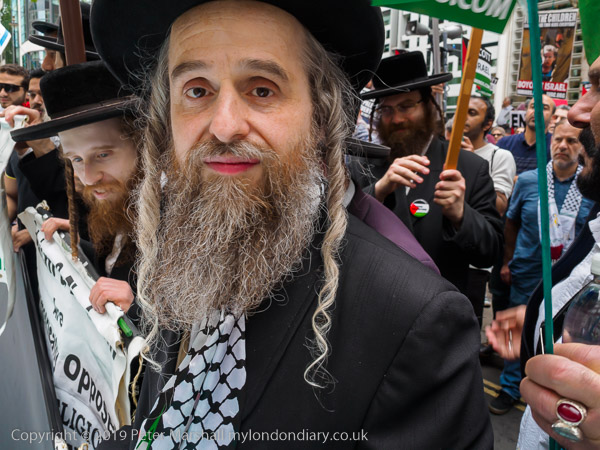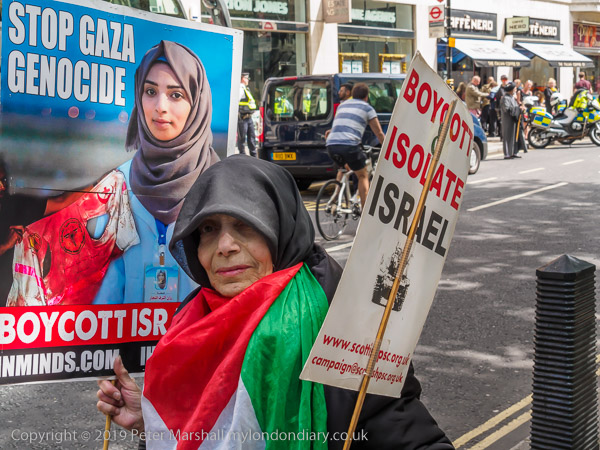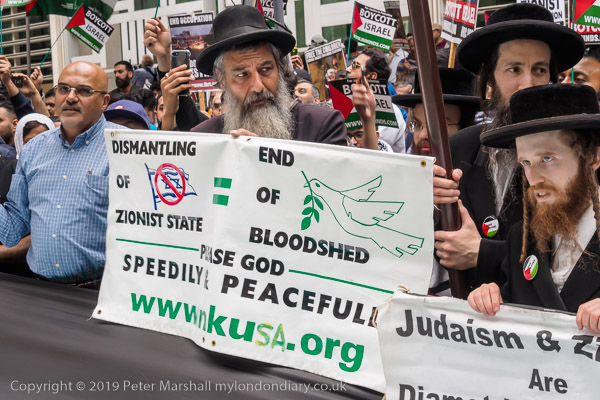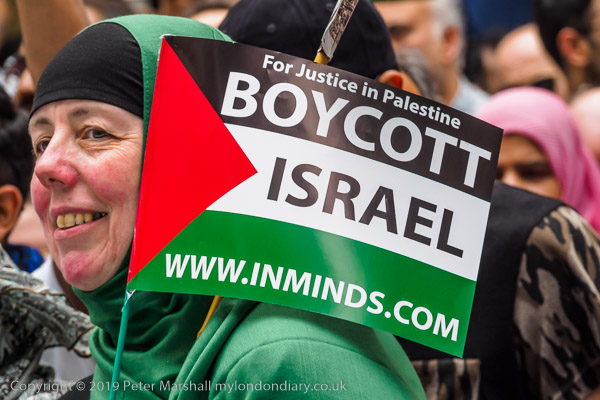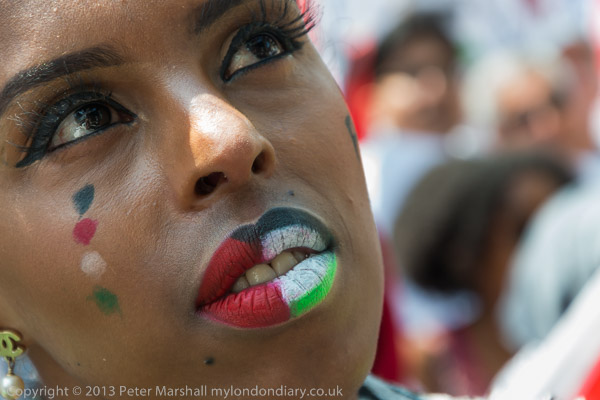
Israel ‘disengaged’ from Gaza in 2005, but retained many controls in what international bodies still consider a form of occupation. It has maintained a blockade, controlling access by sea and air to the area which has a closed border with Egypt and strict border controls to Israel. With 1.85m Palestinians on under 140 square miles it is the third most densely populated area in the world. (See Wikipedia for most of the figures in this post.)
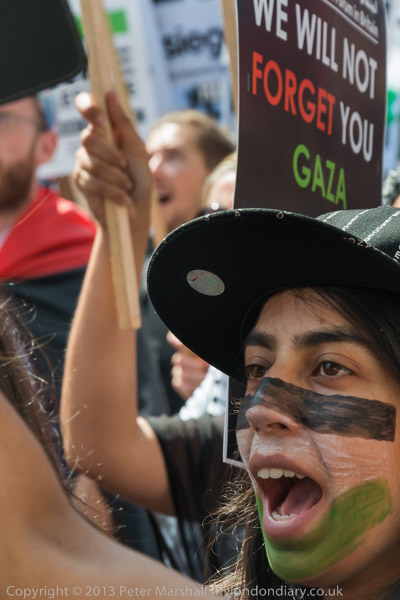
The Israeli and US-led economic blockade of Gaza, imposed after Hamas gained a majority in the area in the 2006 elections and too over from Fatah in 2007 has stopped the import and export of many goods, and together with damage caused by Israel air raids and invasions has led to severe shortages of water, medicine and power.
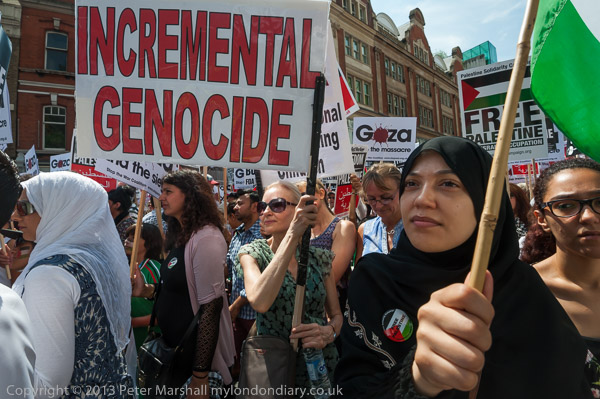
The protest in London on July 26th 2014 came during the Israeli ‘Operation Protective Edge’, which had begun on July 8th with bombing and artillery fire and escalated to a ground invasion on July 17th, with the aim of killing as many Palestinian militants as possible. It was sparked by the murder of three Israeli teenagers by Hamas members but the Israeli response was quite disproportionate.
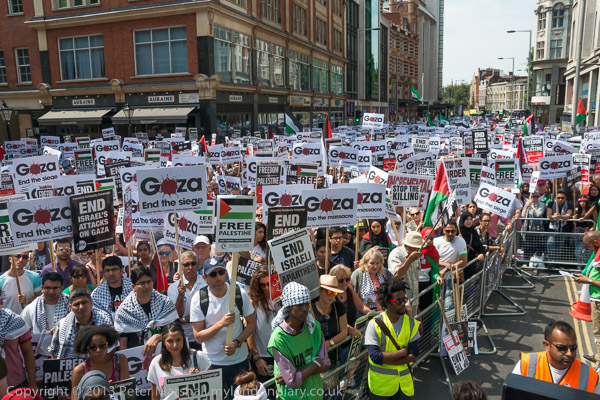
Estimates of deaths and damage vary slightly, but agree that over two thousand Palestinians were killed, with the UN suggesting that 1,462 of these were civilians. 67 Israeli soldiers were killed and 6 civilians were killed by Palestinian rockets.
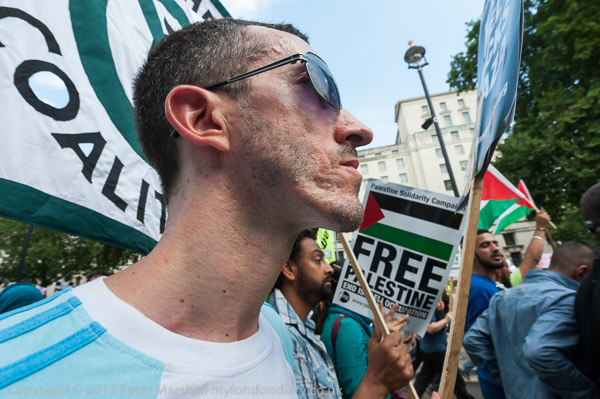
The damage to properties was similarly disproportioate. While around 18,000 homes were destroyed or seriously damaged in Gaza, Palestinian rockets only destroyed one in Israel. Gaza also lost over 200 places of worship, and almost three hundred primary schools and 73 medical facilities were badly damaged or destroyed. The attacks are said to have produced around 2.5 million tons of rubble in Gaza.
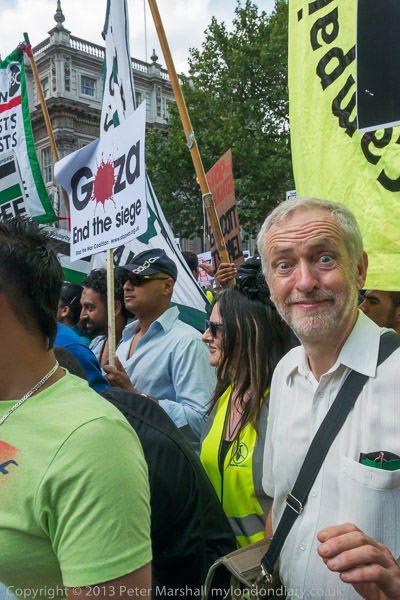
This is of course not the only year in which there were attacks by Israel on Gaza. “008-9 saw ‘Operation Cast Lead’ which also produced incredible devastation and over a thousand Palestinian Deaths and 13 of Israelis. In 2018 there were border protests in which over 13,000 Palestinians were seriously wounded by Israeli snipers and many killed. A UN Human Rights Council’s independent commission examined 489 cases of Palestinian deaths or injuries and found that only two were possibly justified as responses to danger and the rest were illegal. And most recently in May 2021 there were ten days of attacks by Israeli forces resulting in more destruction and deaths.
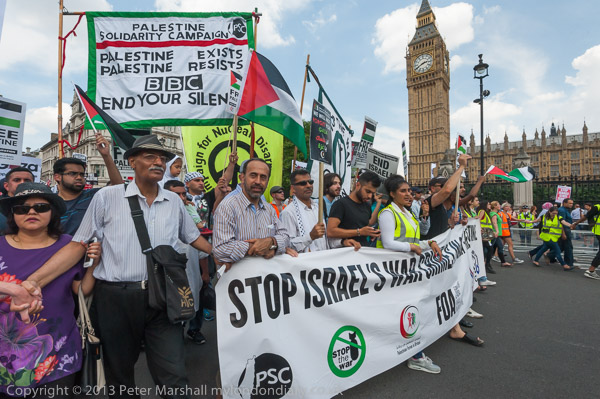
The protest on July 26th began on the main road close to the Israeli Embassy, tucked away in a private street in Kensington. Soon themain road was packed with people many too far away to hear the speeches despite the amplification. Finally it moved off on its way to Parliament Square.
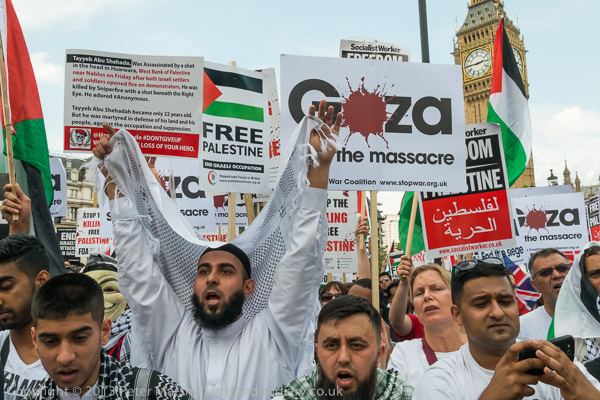
There was a long list of speakers at the rally, including a number of well-known musicians and other public figures, but I began to feel rather tired, having been on my feet too long covering this and another protest, and I left before the end. But you can see pictures of many of the speakers as well as the crowd in My London Diary.
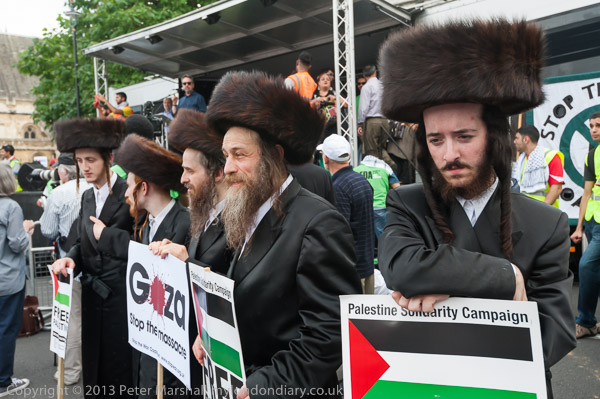
As usual there were many Jewish supporters of Palestine on the march, and a small group of the ultra-orthodox Neturei Karta anti-Zionist Jews who had walked from north London to join the rally.
Stop the Massacre in Gaza Rally
End Gaza Invasion March to Parliament
Israeli Embassy rally – End Gaza Invasion
